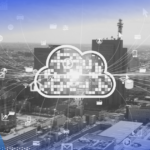The Role of Software in Digital Transformation for Businesses illustrates how critical software solutions are in shaping the future of enterprises. In today’s fast-paced digital landscape, businesses are increasingly relying on sophisticated software tools to not only streamline operations but also enhance customer experiences. By leveraging technology, companies can adapt to market demands, improve efficiencies, and innovate their service offerings, making software a pivotal element of their transformation journeys.
This discussion delves into the various aspects of how software integrates into digital transformation strategies, exploring its impact on operational agility, data management, and customer engagement. With the rise of remote work and the need for seamless digital interactions, businesses must embrace software as an essential driver of change to stay competitive.
In today’s fast-paced digital world, the significance of effective communication cannot be overstated. Whether in personal or professional settings, the ability to convey ideas clearly and persuasively has become a vital skill. This article will explore the art and science of communication, covering various aspects such as the elements of effective communication, barriers that hinder it, and tips to improve your communication skills.
Understanding Communication Communication is often defined as the process of exchanging information, ideas, thoughts, or feelings between individuals or groups. It encompasses various forms, including verbal communication (spoken or written words), non-verbal communication (body language, facial expressions), and visual communication (graphs, charts, images). Each form plays a critical role in how messages are conveyed and understood. Elements of Effective Communication To communicate effectively, several key elements must be present:
1. Sender
The person who initiates the communication. They must be clear about the message they wish to convey.
2. Message
The information or idea that the sender wishes to share. It should be organized and precise to avoid misunderstandings.
3. Medium
The channel through which the message is transmitted, such as face-to-face conversation, email, text, or video call.
4. Receiver
The individual or group for whom the message is intended. The receiver’s ability to interpret the message accurately is crucial.
5. Feedback
The response from the receiver back to the sender. This can help clarify misunderstandings and ensure that the message was understood as intended. Barriers to Effective Communication Despite having all the elements in place, communication can still break down due to various barriers. These include:
Physical Barriers
Environmental factors such as noise, distance, or poor technology that can obstruct the clarity of a message.
Psychological Barriers
Emotional states, biases, or preconceived notions that affect how messages are sent or received.
Language Barriers
Differences in language or jargon that can lead to confusion if the message isn’t adapted for the audience.
Cultural Barriers
Variations in cultural backgrounds can impact how messages are interpreted, creating potential misunderstandings. Improving Communication Skills To enhance your communication abilities, consider the following strategies:

1. Active Listening
Pay close attention to the speaker, providing feedback through nodding or verbal acknowledgments. This ensures that you fully understand their message before responding.
2. Clarity and Conciseness
When delivering a message, aim to be as straightforward and brief as possible. Avoid jargon and complex sentences that might confuse the receiver.
3. Non-Verbal Communication
Be mindful of your body language and facial expressions, as they can significantly impact how your message is perceived.
4. Empathy
Try to understand the receiver’s perspective. This will help tailor your message to meet their needs and respond appropriately to their feedback.
5. Adaptability
Be open to adjusting your communication style based on the audience. Different situations may call for different approaches, so being flexible is key. The Role of Technology in Communication In the modern era, technology has transformed the way we communicate. Tools such as emails, instant messaging, and video conferencing have made it easier to connect with others, regardless of geographical location. However, while technology offers convenience, it can also present challenges.
Misinterpretations can occur more easily in written communications without the context of tone and body language.To navigate this landscape effectively, it’s important to choose the right medium for your message. For instance, complex or sensitive topics may be better suited for face-to-face discussions or video calls, where nuances can be better conveyed. The Importance of Feedback Feedback is a critical aspect of communication that often gets overlooked.
It provides an opportunity for both the sender and receiver to clarify and deepen their understanding. Encourage open dialogue where feedback is welcomed and constructively given. Not only does this strengthen relationships, but it also fosters an environment of continuous improvement and learning. Wrapping Up Communication is an essential skill that can be developed and refined over time. By understanding the key elements of effective communication, recognizing potential barriers, and applying strategies to enhance your skills, you can become a more effective communicator.
In both personal and professional contexts, good communication can lead to stronger relationships, increased collaboration, and greater success.In conclusion, the art of communication is not just about speaking or writing well; it’s about connecting with others in a meaningful way. Embrace the journey of improving your communication skills, and you’ll likely discover new opportunities and experiences that enrich your life.By investing time and effort into mastering this skill, you will not only benefit yourself but also positively impact those around you.
Remember, effective communication is a two-way street, and the more you practice, the better you’ll become.



